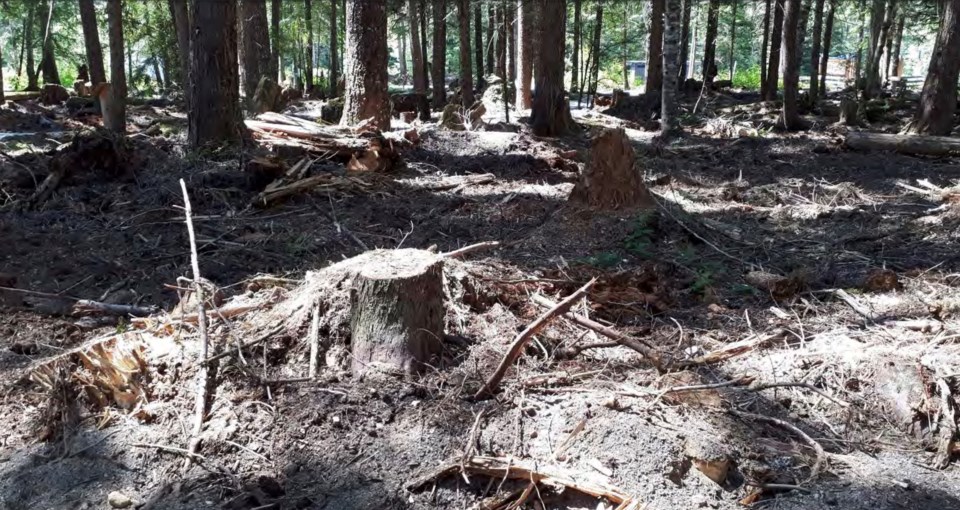While walking through the Whistler Interpretive Forest on the Discovery Loop Trail last month, Kristina Swerhun noticed something that concerned her—a swath of recent fire-thinning work had left the forest in rough condition.
“Almost every spot on the forest floor was torn up; there was zero moss left,” Swerhun said. “Granted, there wasn’t a lot of moss there in the first place, but there was some that was starting to come back, and after the fuel-thinning … everything’s been disturbed. And it just doesn’t have to be like that.”
Swerhun, who sits on the board of directors of the Whistler Naturalists, is concerned that the way the Resort Municipality of Whistler (RMOW) and its contractors are undertaking fuel-thinning prescriptions is resulting in ecological harm to the forest, particularly to the forest floor, by using logging machines.
Swerhun believes there is a disconnect between the mitigation process on paper and what is happening on the ground in Whistler’s forests. She wants to see more thought put into potential ecological outcomes while thinning is taking place, and a reassessment of the use of thinning by hand.
“I just think we need to pay more attention to the ecological outcomes, not just the fuel-thinning outcomes,” she said.
Fuel-thinning in Whistler’s forests has been a long-standing concern for many in the community. With the growing risk of wildfires due to climate change, properly managing fuel treatments is more crucial than ever. In 2022, the RMOW received $10.1 million from the federal government to undertake fuel mitigation in several areas across the municipality. Following recommendations from the RMOW’s Community Wildfire Resiliency Plan, the funding will pay for treatments in 12 high-risk areas such as Rainbow, Emerald and 16 Mile Creek.
Forest ecologist Rhonda Millikin, co-chair of the RMOW’s Forest and Wildland Advisory Committee, shares Swerhun’s concerns, and advocates for the municipality to reconsider its mitigation strategies to improve forest resilience.
“We have to stop killing the microbial community with ultraviolet light and tilling, and we have to stop removing sources of nutrients in wood debris and ground cover,” Millikin said. “We’re just reducing our forest’s natural resilience.”
Millikin has spent considerable time researching the effects of fuel-thinning on Coastal forests, and argues the RMOW’s current practices are having adverse effects on the ecology of the forest, increasing the rate at which the forest floor is drying out.
“What we’re doing is we’re increasing fire risk,” Millikin said.
“If we’re thinking about having healthy forests for the future, this is not the way to go.”
The RMOW has long enlisted forester and biologist Bruce Blackwell, of B.A. Blackwell and Associates, to build its fire mitigation plans.
According to RMOW environmental stewardship manager Luisa Burhenne, the municipality is careful about how it approaches fuel-thinning work, and regularly listens to stakeholders in developing treatment plans.
“When we do these prescriptions with these plans, we look at all factors: environment, access, how steep the area is, and also economics—like hand-cutting is way more expensive and less effective,” Burhenne said.
“We really take all of these factors and plan out what makes sense.”
Burhenne said the RMOW looks at all angles of a project, including ecological values, and works closely with consultants to ensure the detailed plans are “followed to the tee.” However, she acknowledged that the process is not perfect, and the RMOW appreciates community feedback.
“We do our fuel management differently than we did many years ago; it’s way less intrusive. And because we listen to the community, we have heard those kinds of concerns before and take them seriously,” Burhenne said, adding that the RMOW developed a monitoring plan and is working to understand the effects of different approaches to fuel mitigation in the resort.




